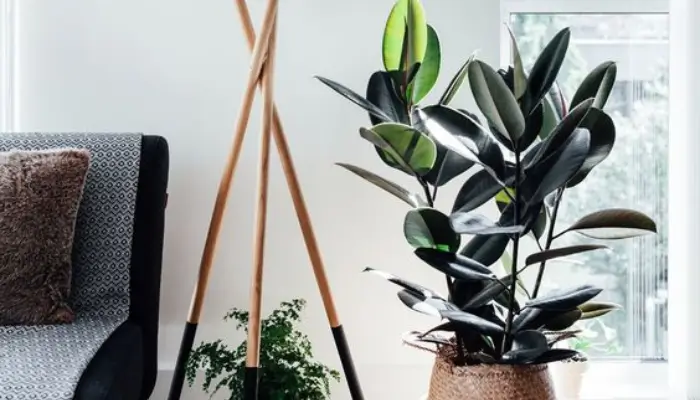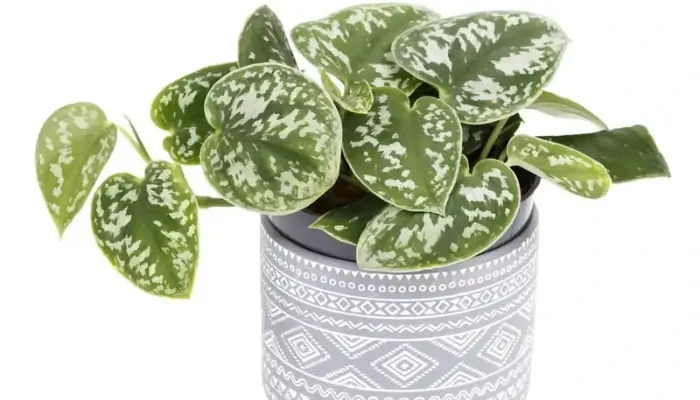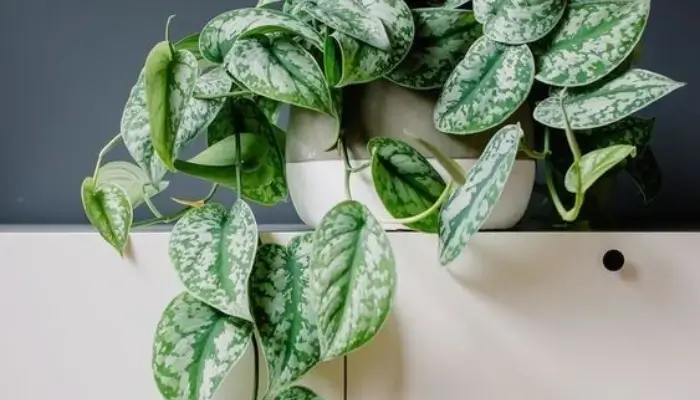Hello Guys,
Are You planning how to decor a living room with plants ?
then this is the right place to visit Don’t worry this article is here to help you.
A great method to give homes life and vigor is to decorate with plants. There is nothing like luscious greenery to brighten up a living room, and it is widely known how beneficial plants are to our health and wellbeing.
The possibilities for decorating with plants are unlimited because there is such a great range of indoor plants available, from delicate string of pearls to massive bird of paradise plants and indoor trees like figs and citrus.
There is a house plant for every room and occasion, whether you want to brighten up the kitchen or bring peace to the bedroom. Before you start decorating, make sure to familiarize yourself with the best indoor plants.
However, just by having an interest in low-maintenance plants, I was able to learn a ton about the numerous choices for easy-care plants, plant décor, and plant-related decor items. I became so obsessed with the subject of plant decoration that I want to share my expertise and enthusiasm with you!
The purpose of this post is to broaden your eyes (and mind) to the variety of plant-decorating alternatives available to us all, some of which are really low-maintenance.
The Benefits Of how to decor a living room with plants ?
As we strive to re-establish our connection with nature and welcome its soul-nourishing, relaxing impact into our homes, decorating with plants has been immensely popular in recent years.
Indoor plants are adaptable decorating ideas and are employed by interior designers as living works of art. They come in a wide variety of shapes, forms, colors, and textures, from big leafy palms to little shapely cactus, not to mention flowering kinds.
According to Eli Manekin, the owner of the indoor plant retailer Loop Living, “Plants have a sculptural quality, are always changing, have such exquisite intricacies, and match every type of decor style” (opens in new tab). “There really isn’t another design feature like them, and they enhance any interior to their full potential.”
things to consider while choosing indoor plants
Discover the factors to take into account so you can choose the “right plant for the right space” when selecting an indoor plant. After checking this list, no more dying plants will exist.
Many people impulsively purchase a plant, only to be disappointed when it arrives because they don’t have the proper lighting, humidity, or other conditions. Before selecting an indoor plant online, there are a number of factors to take into account.
Once you acquire the plant, you surely want to make your job easy to ensure both your success and the success of the plant. Let’s talk about the key factors to take into account while picking the best plant for your house!
1. consider the Humidity Levels
The humidity level in a typical home with heating and air is between 30 and 45 percent. A greater humidity would be between 45 and 60%, and a humidity that resembles a greenhouse would be over 60%.
Depending on the size of the aquarium, the humidity may be higher if you have one. You may alter the amount of moisture in the air by setting a whole-house humidifier to various settings. Get a hygrometer and put it close to the location where the plant will be by your home’s humidity level. You can then assess whether the location you choose is sufficiently humid.
2. consider the space accommodations for Indoor Plants
Plants can grow taller than some people. Do you have the space to allow them to grow and spread their leaves (wings)? Others only require a tabletop to sit on. See if there is enough light in the area where your home gardening space is located by looking around the room.
In order to avoid having to move your plant often as it develops, assess the height and width of the space and provide enough of room. Plants prefer to settle into their environment and remain there.
It might go into shock if you move from one room to another with a different setting, so choose your location wisely. Additionally, you should position it such that it won’t be hit, knocked over, or be vulnerable to falling over. Consider the flow of traffic around the house before making a choice. The ideal formula for success is “right plant, right spot”!
3. consider the Pet- friendly indoor plants
Don’t forget your four-legged fur babies. We have a fur-tastic grouping of pet-friendly plants you can choose.
4. consider the temperature
The right temperature is crucial to the health of plants. The following is the most important consideration when it comes to temperature:
The soil dries out more slowly as a result of air conditioning.
The soil (and the plant itself) dries out more quickly when exposed to central or radiant heat.
Another justification for keeping plants away from heaters and air conditioners is this.
It also explains why you should water plants more frequently in the winter when it’s hot inside and less frequently in the summer when your air conditioner keeps your house cool.
5. consider the right soil
Make sure the soil you select is formulated for indoor plants. You take your time at the store to make sure you buy the proper sort of plant because some, like succulents and cactus, have specific soil needs.
6. consider the drainage of plant
You can avoid over watering your plants by potting them in planters with drainage holes. This is significant since most plant roots dislike sitting in water. Additionally, too much water might cause mold to grow on the soil. Just make sure your planter has a little dish underneath it so that water doesn’t run off onto the area it is sitting on.
list of the best indoor plants for living room
1. decor with Snake Plant

Sansevieria, sometimes referred to as mother-in-tongue law’s or the snake plant, has gained popularity recently, and for good reason. They are the indoor plants that everyone can display due to their sleek lines and resilience. The best aspect about snake plants is that they thrive when you almost forget about them. They are completely safe for your animal housemates and serve as air purifiers to improve the air quality in your home.
The snake plant is a wonderful plant for minimalist home décor ideas because of its small and pointed foliage. These plants are a wise choice because they have compact, narrow leaves that complement the home’s subdued design.
2. decor with Monstera plant

The Monstera Deliciosa, often known as the “Swiss Cheese Plant,” may be the list’s largest “star” because it has recently developed into something of a super-trend. And chances are, you’ve seen its lovely leaves on everything from wallpaper to throw pillows. Here is a look at the upkeep and maintenance of this dramatic plant.
Almost area in your house is a good place to plant Monstera! It can withstand minimal lighting, but develops more quickly and dramatically in a bright area. Having said that, stay out of direct, bright sunlight as it could burn the foliage.
Just enough water will protect the soil around your monstera from drying out completely. You don’t have to bother about watering your Monstera constantly because it can tolerate drought to some extent.
3. decor with String Of Hearts

Whether you refer to Ceropegia woodii as “String of Hearts,” “Rosary Vine,” or “Sweetheart Vine,” this flowering plant from South Africa makes a wonderful houseplant.
Its thick, heart-shaped leaves grow on long, cascading vines that hang straight down, giving the impression of a beaded curtain of heart-shaped leaves.
Ceropegia wood-ii thrives in bright indirect light, while it prefers some direct sunlight. It is the ideal plant for a sunny place in your home. This plant, a semi-succulent, can withstand drought and requires little maintenance.
4. decor with Zamioculcas zamiifolia plants

The “Raven” variant of Zamioculcas zamiifolia plants goes a little bit further than other varieties, even if they all fall under the décor category. Along with erect stems and glossy foliage, this cultivar also boasts a striking black hue. Finding it is difficult, which adds to its rarity and specialness. Put this on your mantle or against a plain white wall. The “Raven” will get people talking in your house right away.
ZZ plants require little maintenance because they are drought and low light tolerant like snake plants. Avoid overwatering to prevent the plant from rotting from the roots up. Also keep in mind that both dogs and cats are poisoned by ZZ plants.
5. decor with Rubber plants

For a very long time, rubber trees have been a favorite of many people who love house plants. They are rapid growers and require little maintenance; in just a few years, a rubber tree can expand from a small pot to occupy a substantial portion of your home. This cultivar stands out because it is a deep burgundy color.
Although it prefers indirect light, this plant may also tolerate brighter lighting. Although it is one of the simpler ficus trees, it still requires weekly watering and has a propensity to drop one or two leaves when under stress. Both dogs and cats are poisoned by all ficus plants.
6. decor with Ficus plants

This ficus is an example of a standard tree, or one with only one trunk. Branching out from the trunk’s straight lines are oblong-leaved branches that resemble bean pods in appearance.
This tree is a great way to fill a blank wall or corner while still retaining a minimalist style because it is enormous without sacrificing the appeal of a simple, elegant design. To go the extra mile, put it in a modern vessel.
Given that it is a ficus, it will require more care than a snake plant or a ZZ plant. These plants require weekly watering and do best in direct, bright light. Keep in mind that a large plant will require much more water than a tiny one does if you have one.
Keep this away from sudden fluctuations in temperature. When under stress, the Ficus alii will drop a lot (and I mean a lot) of leaves. This is a stress response, not a sign that your plant is going to pass away. This plant has even been known to lose all of its leaves before growing them back. Similar to the rubber tree, this is poisonous to cats and dogs.
7. decor with ghost cactus

Do you have a room in your house that receives a lot of light? You might find what you’re looking for in a ghost cactus! Rare and refreshing, the Euphorbia ammak is an African cactus that is endemic to the continent. Any dark wood or walls in your home would stand out sharply in contrast to the bright tint of the cactus.
The African candelabra cactus, sometimes known as the ghost cactus, is a slow-growing plant that prefers intense sunshine and infrequent irrigation. Smaller, more economical plants are quite simple to find, but if you want a large-scale plant, be prepared to pay a premium. However, if you have enough light in your house, this plant is a wise investment.
8. decor with Echeveria plants

Even though the succulent fad comes and goes, echeverias are still incredibly popular. Many beginning houseplant collectors consider them essential because of their apparent simplicity, but what really sets them apart is how versatile they are. Echeverias may blend into any style of design as long as they receive the right amount of light. To complete that minimalist aesthetic, place a single plant in a low-profile container or several in a glass terrarium.
Echeverias require lots of light and little irrigation. Avoid over watering to prevent plant rot. Between watering, let the soil totally dry out to make sure you’re safe.
9. decor with Satin pothos

Look no farther if you’ve been looking for a plant with texture and alternatives. The satin pothos can be trained to climb up a totem or to drape from a smaller container, giving you the appearance of a vine and the height of a tree. The satiny surface of the satin pothos contributes to the glossy appearance these leaves emit when exposed to the sun.
All satin pothos require is once-weekly watering and indirect light. If you skip a watering cycle, don’t fret; this plant is forgiving. They are hardy plants. You should be aware that the scindapsus pictus plant is poisonous to both dogs and cats.
10. decor with Calathea ornata

This simple plant is given a humorous twist by the pink pinstripes of the Calathea ornata. You won’t have to worry about this plant taking up all the space on your shelf or table because it keeps rather compact.
When it comes to care, this variety of calatheas might be a little temperamental. The leaves must be in bright, indirect light because they will burn in direct sunlight. Keep the soil from drying out.
The edges of the leaves will begin to brown as the soil dries up, and they won’t recover. When the top of the soil starts to become dry, water your calathea. To be safe, spray the leaves frequently.
11. decor with Bird of Paradise

While houseplant enthusiasts know this plant as the enormous, lush plant that it is, florists recognize it as an exotic flower. This plant can occupy a significant amount of space under the right circumstances, making it the ideal focal point for a big room. When the top inch of the soil is dry, give your bird of paradise bright, indirect light and a thorough watering.
If the plant doesn’t receive enough water or humidity, the leaves will begin to split on the margins. To avoid ugly leaf splits, mist every day. Note: Both dogs and cats are poisoned by plants called Bird of Paradise. measure.
FAQs About how to decor a living room with plants ?
How should I arrange my living room with plants?
Here are a few tips to keep in mind as you bring more plants home:
Arrange in Odd Numbers.
Choose Different Sizes.
Think About Leaf Shapes.
Include Plants With Colorful Leaves.
Use Plenty of Decorative Pots.
Don’t Forget Houseplant Care.
Is it good to have plants in your living room?
Plants not only make a room feel more cozy and welcoming, but they’re also good for your mental and physical health. Plus, a now-famous 1989 NASA study found that houseplants can reduce indoor air pollutants such as benzene and formaldehyde.
How do you display plants indoors?
8 space-saving ways to display houseplants
1. Install floating shelves. …
2. Opt for a wall-mounted planter. …
3. Try an indoor trellis. …
4. Hang a planter from the ceiling. …
5. Utilize window sills. …
6. Install a rail or towel rack. …
7. Hang plants from a dowel or copper pipe. …
8. Opt for a three-tier serving stand
Can you have too many plants in a room?
You can never have too many plants. You only have too many when you can longer access critical parts of your house and can’t properly take care of them. The amount of plants is never the problem, but the cost of maintaining and time required to take of your plants can definitely become a problem.
Tell Us In The Comments As Per You this information is use full.
